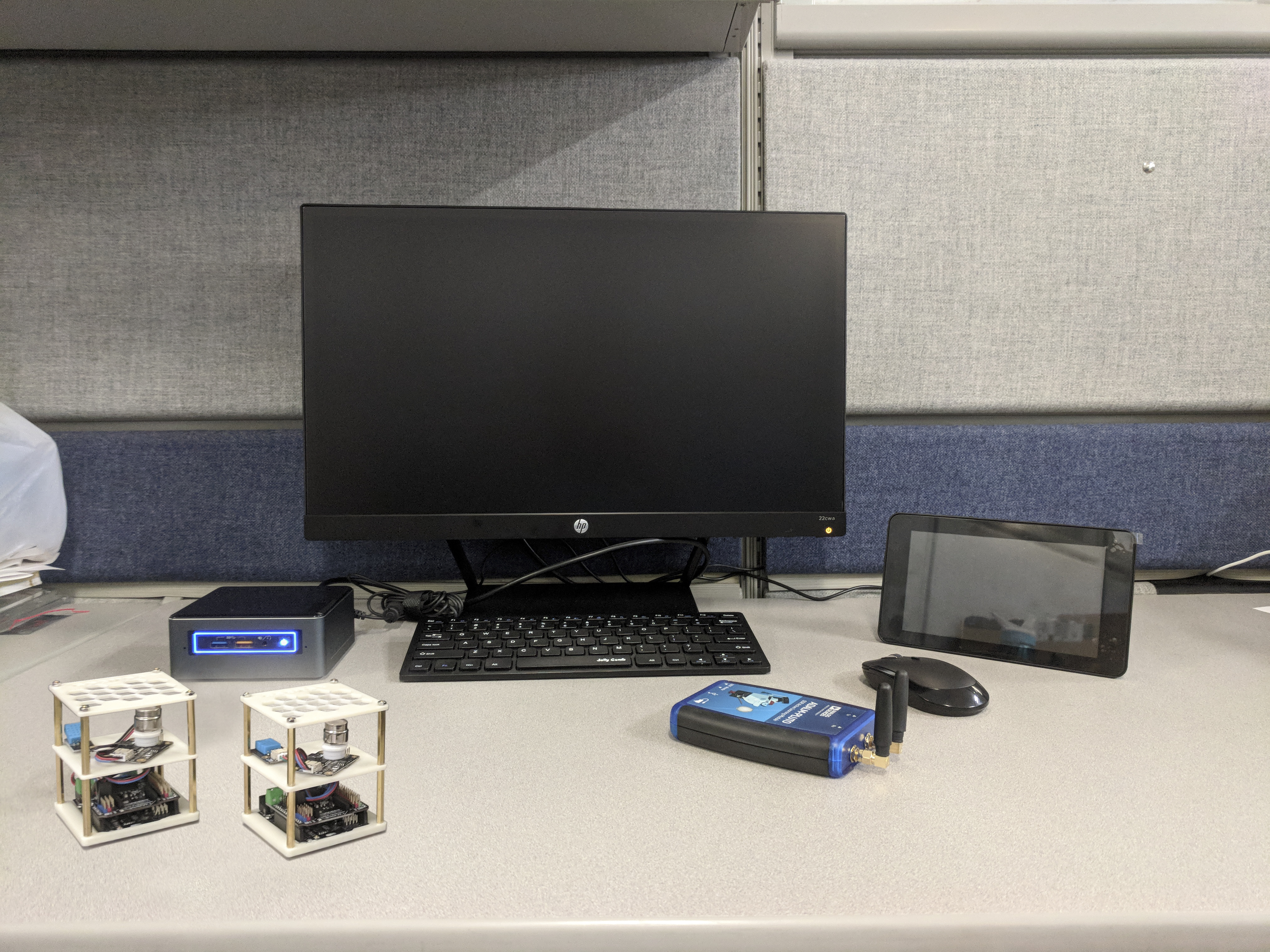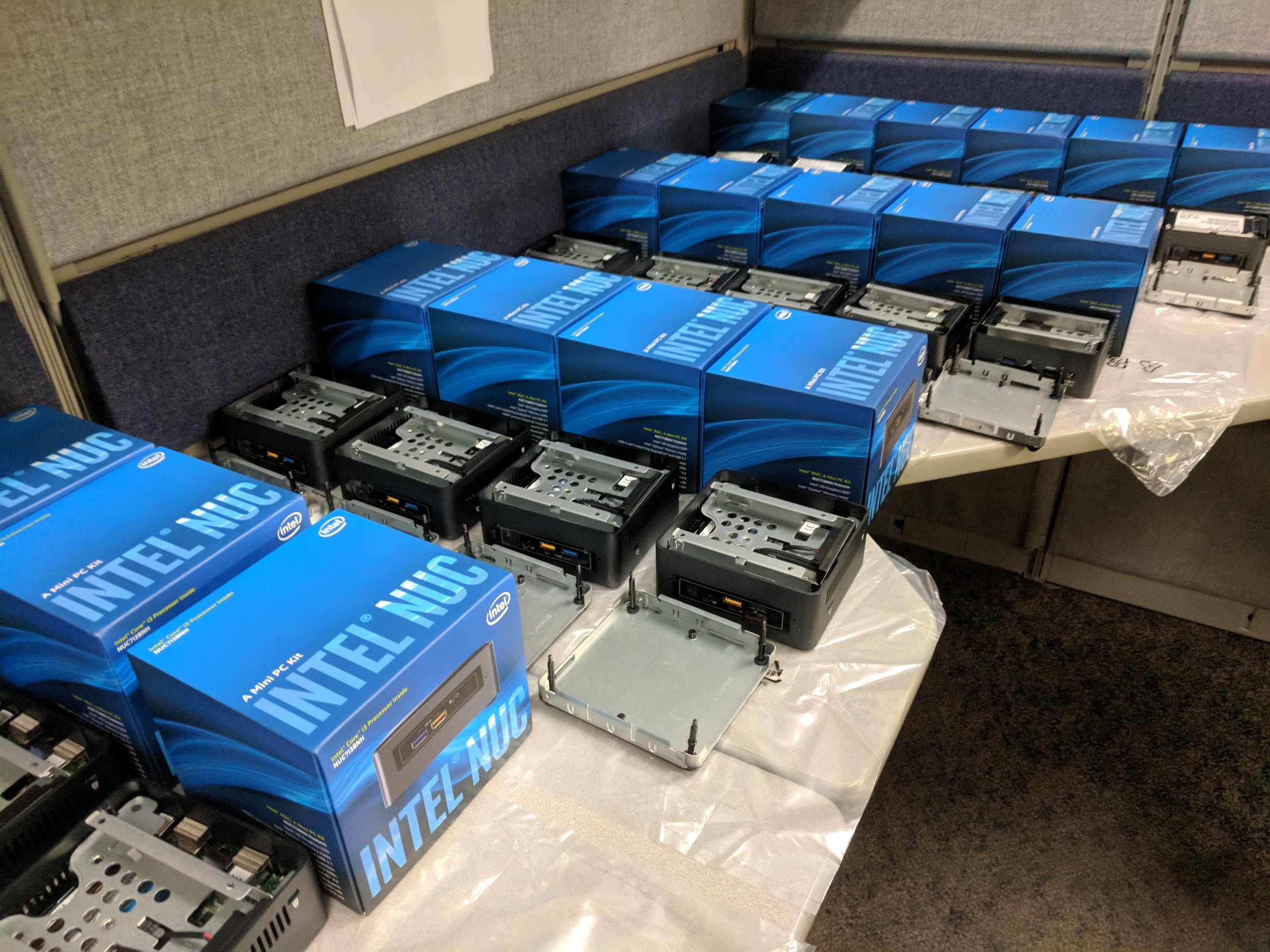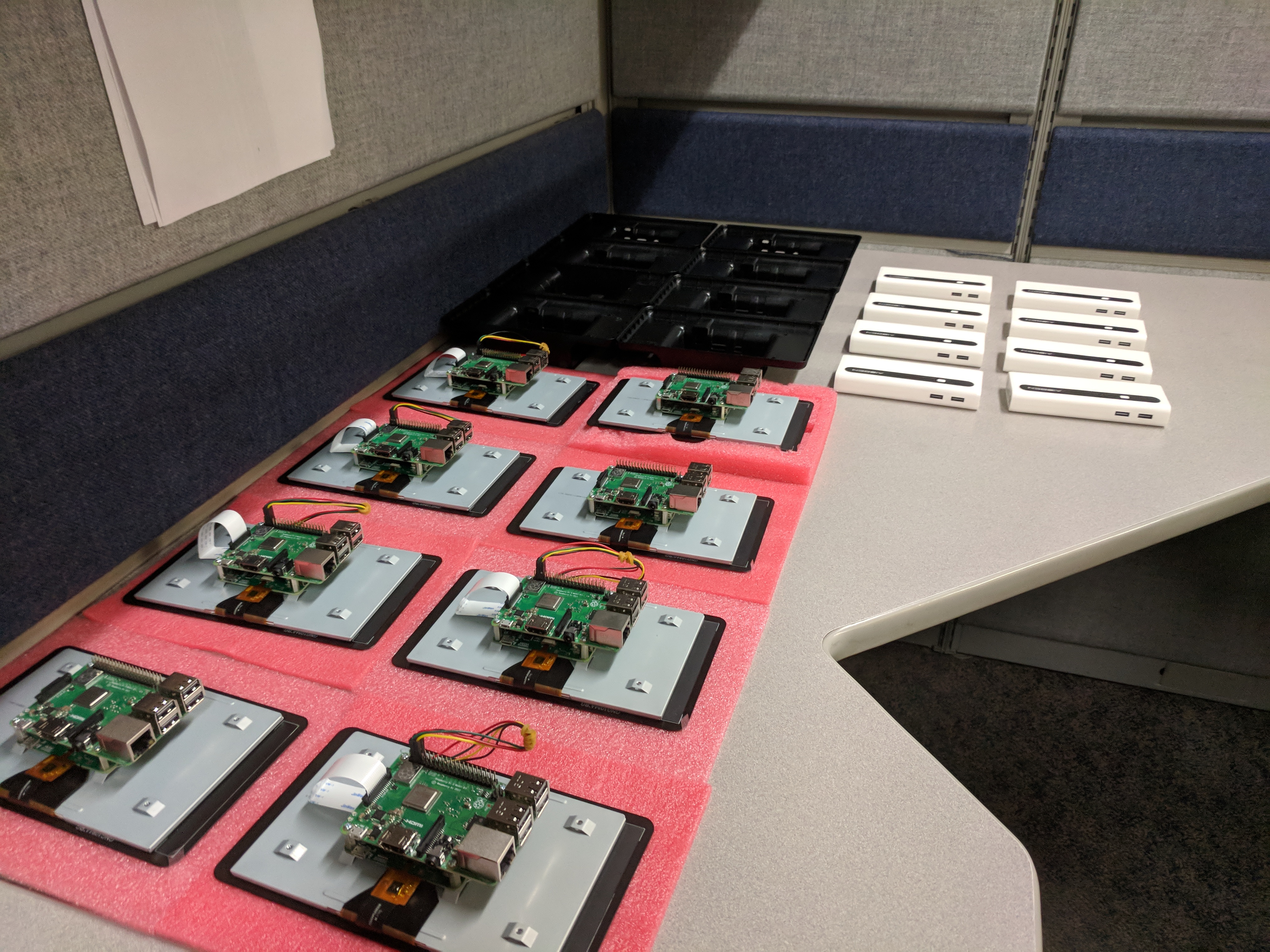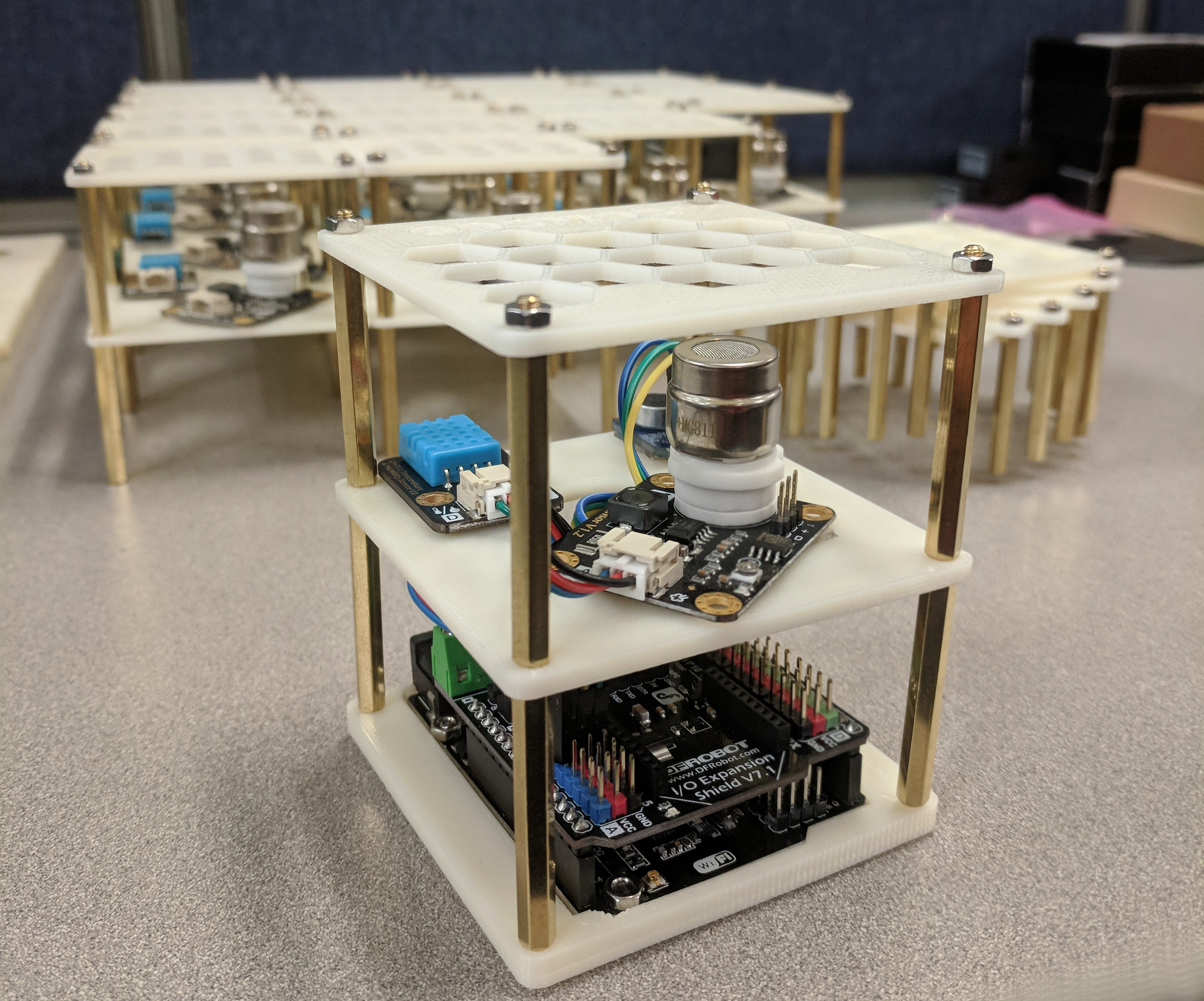1 / 5

COSMOS Toolkit
2 / 5

COSMOS Desktop Node
3 / 5

COSMOS Mobile Node
4 / 5

COSMOS IoT Node
5 / 5

COSMOS IoT Node
Hardware system
The hardware setup is a downgraded version of the COSMOS nodes. Consists of various off-the-shelf components that combined toghether allow the teachers to execute experiments. The hardware setup consists of the following major components
- Software defined radio (SDR): The ADALM Pluto SDR units have been selected as they support a wide frequency range (70 MHz - 6 GHz) supporting both transmission and reception of wireless signals. The RTL-SDR units have been selected, due to reception capabilities, and the extreme low-cost which allows supporting more students.
- Processing units: Intel NUC, is an ideal solution, since it is a small form factor computing platform, with enough processing capabilities to drive the SDR units.
- IoT nodes: Microcontroller based devices with various wireless interfaces (i.e., XBEE, Wi-Fi, and Bluetooth), and sensing capabilities such as air and soil temperature, humidity, light luminosity and color, carbon dioxide (CO2) levels, dust (PM1.0, PM2.5, and PM10), noise sensor, and accelerometer.
- Mobile node: A device based on the open-source Raspberry-Pi platform. Provides mobility to SDR experiments, and acts as an IoT gateway for outdoor experiments
Software system
The software system is a web-based interface that has been enhanced with an easy to use philosophy on the execution and management of the experiments since it is designed for K–12 teacher and students. The users are able to select a particular lab, execute the experiment, and collect the measurements with the same operational philosophy as the COSMOS testbed. The software system is divided into the following components
- Web front-end interface: the front-end interface is based on HTML, CSS for styling, and Javascript for requests to the back-end server.
- Web back-end server: the server is based on the popular python programming language and is responsible to listen for requests from the front-end, manage the SDR experiments, collect IoT measurements.
- GNU radio: An open-source software suite, that provides the necessary signal processing blocks to implement software radios.
- IoT management: The measurements are collected by the server, stored in a time-series database (influxdB), and analyzed using a visualization tool (Chronograf).




